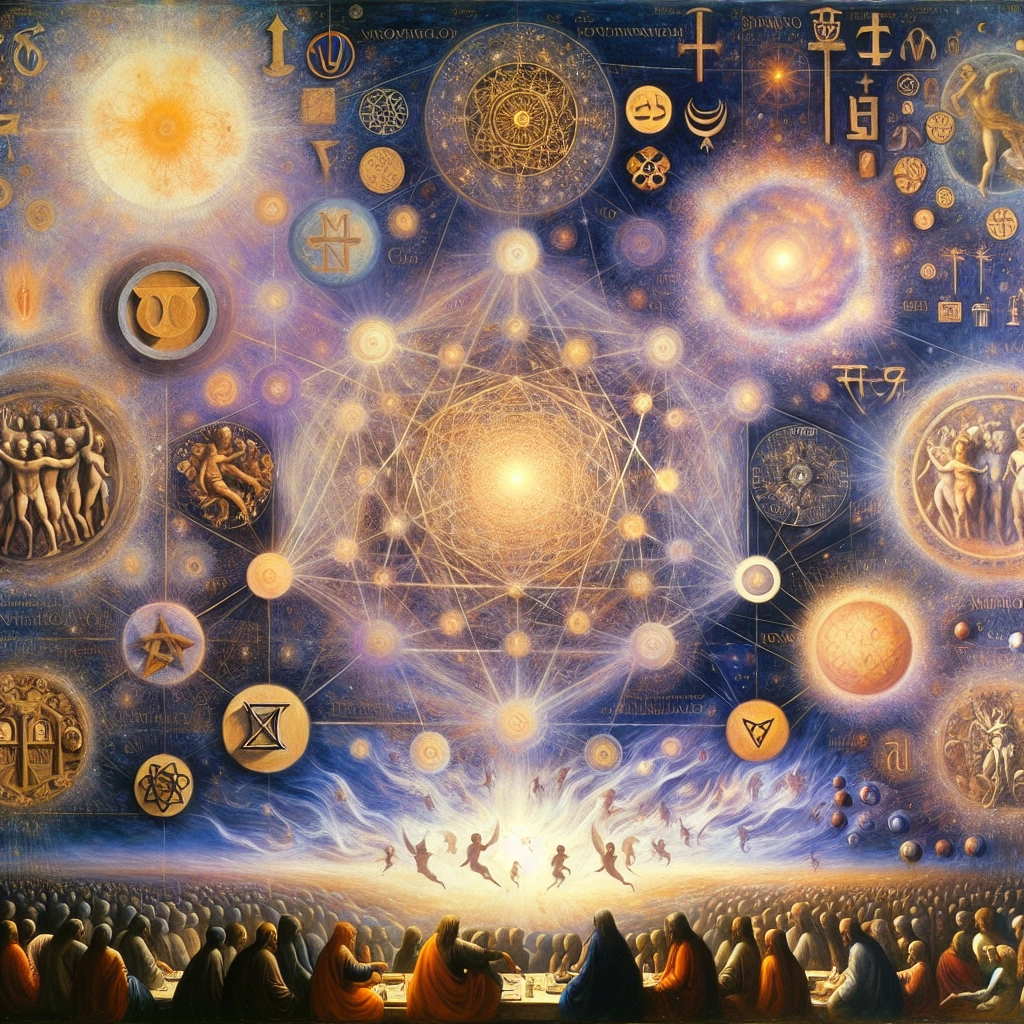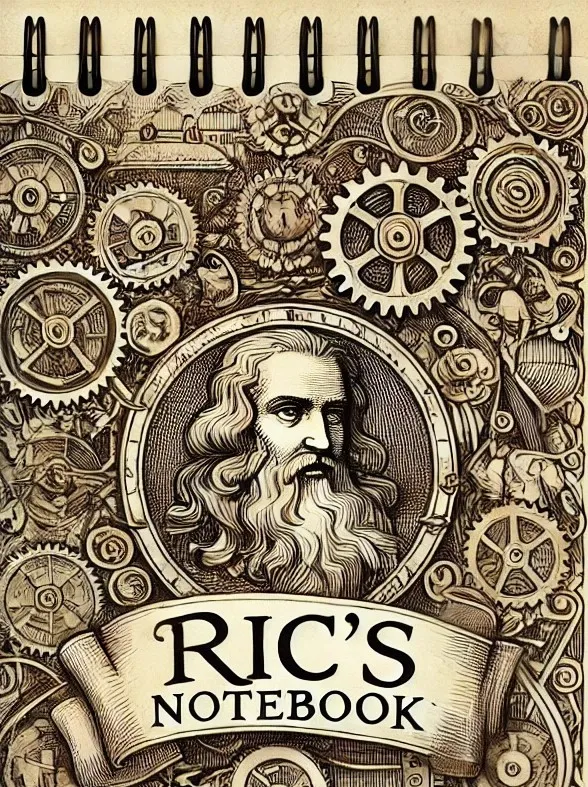
- Published on
- Authors

- Name
- ric de yuga 😄
🌌 Quantum mechanics, with its mind-bending principles and counter-intuitive implications, has intrigued scientists and philosophers alike. Interestingly, many of these quantum concepts find striking parallels in the spiritual teachings of various religions. Let's embark on a journey to unravel these connections:
1. Uncertainty Principle 🔍
The Uncertainty Principle, introduced by Werner Heisenberg, states that certain pairs of physical properties, such as position and momentum, cannot be simultaneously known with precision. The more precisely one property is determined, the less precisely the other can be known.
Quran ☪️
The Quran emphasizes that some aspects of existence are known only to God, resonating with the Uncertainty Principle's implications that certain properties are beyond precise human knowledge. "And with Him are the keys of the unseen; none knows them except Him..." (Quran 6:59)
Buddhism 🧘♀️
Buddhist teachings emphasize that everything is constantly changing (Anicca), mirroring the Uncertainty Principle's assertion that we cannot simultaneously know the exact position and momentum of a particle.
Christianity ✝️
The Bible suggests that our current understanding is limited, akin to the Uncertainty Principle's implications that our knowledge of the quantum world is inherently constrained. "For now we see through a glass, darkly..." (1 Corinthians 13:12)
2. Quantum Entanglement 🔗
Quantum entanglement is a phenomenon where two or more particles become interconnected in such a way that the quantum state of each particle cannot be described independently of the others, even when separated by a large distance. The state of one particle instantaneously influences the state of the other(s).
Kabbalah 🌳
The interconnected nature of the Sefirot (divine emanations) in Kabbalah reflects the idea of quantum entanglement, where the state of one particle instantaneously affects another.
Bhagavad Gita 🕉️
The Gita's discussion of the eternal soul connecting all beings mirrors quantum entanglement's suggestion of a deep, underlying connectedness in the universe. "As the same person inhabits the body through childhood, youth, and old age, so too at the time of death he attains another body." (Gita 2:13)
Hermeticism 🔮
The Hermetic idea of "As above, so below" suggests a universal interconnectedness, mirroring the behavior of entangled quantum particles. This is known as the Principle of Correspondence.
3. Wave-Particle Duality 🌊🎾
Wave-particle duality is the concept that every particle or quantum entity may be described as either a particle or a wave. This duality addresses the inability of classical concepts like "particle" or "wave" to fully describe the behavior of quantum-scale objects.
Christianity ✝️
Just as God is described as the source of both light and darkness (Isaiah 45:7), wave-particle duality describes how particles like electrons and photons exhibit both wave-like and particle-like properties.
Hermeticism 🔮
The Hermetic Principle of Vibration states that "Nothing rests; everything moves; everything vibrates." This relates closely to wave-particle duality, underscoring that everything in the universe is in constant motion and manifests in various forms.
Quran ☪️
The Quranic metaphorical depiction of God as light (Quran 24:35) can be thought of in terms of wave-particle duality, representing the duality and multiplicity of divine manifestations within the universe.
4. Superposition 🎭
Quantum superposition is the ability of a quantum system to be in multiple states at the same time until it is measured. It suggests that particles exist in all possible states simultaneously until observed.
Kabbalah 🌳
The concept of Adam Kadmon (Primordial Man) in Kabbalah embodies potentialities of creation, containing all souls and all realities before their actualization, similar to quantum superposition.
Bhagavad Gita 🕉️
Krishna's discussion on the coexistence of action and inaction reflects the principle of superposition. "Those who see action in inaction and inaction in action are truly wise among humans." (Gita 4:18)
Buddhism 🧘♀️
The Buddhist concept of emptiness (Śūnyatā), which suggests that things do not have inherent, fixed states but exist in potentialities, parallels the idea of quantum superposition.
5. Observer Effect 🔭
The observer effect states that the mere act of observing a quantum phenomenon inevitably changes that phenomenon. This implies that the observer and the observed are inextricably linked and that reality is influenced by consciousness.
Hermeticism 🔮
The Hermetic Principle of Cause and Effect suggests that all phenomena (effects) are precipitated by underlying causes, including observation, which aligns with the observer effect in quantum mechanics.
Christianity ✝️
The Bible's call to seek and knock (Matthew 7:7) suggests that the act of seeking alters the reality found, akin to the observer effect where observation changes the state of what is being observed.
Bhagavad Gita 🕉️
The Gita's idea that the observer and the observed are not separate, and that action influenced by consciousness is a recurring theme, mirrors the observer effect. "Actions do not cling to me because I am not attached to their results. Those who understand this and practice it live in freedom." (Gita 4:14)
These quantum principles, when viewed through the lens of various spiritual traditions, reveal a profound interconnectedness between science and spirituality. They suggest a universe that is deeply entangled, filled with potentialities, and intimately linked with consciousness itself. By exploring these parallels, we can gain a more holistic understanding of the nature of reality and our place within it. 🌠
